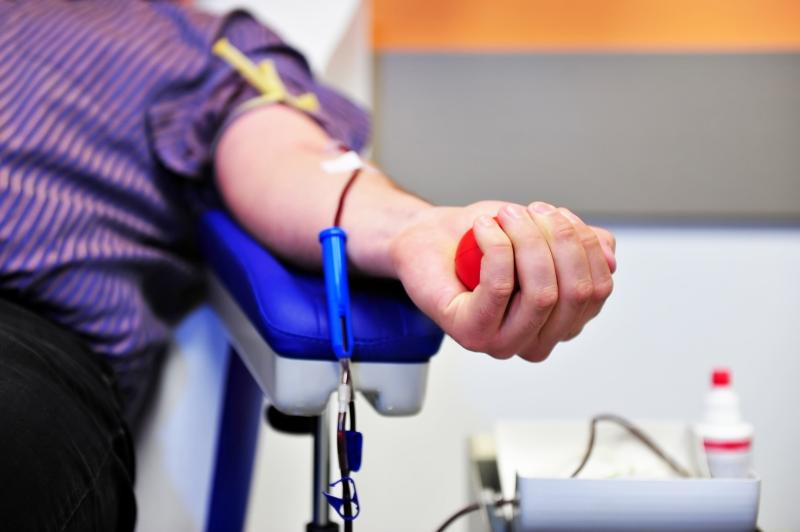Before the discovery of ABO blood types by Karl Landsteiner in 1900 doctors experimented many random transfusions to save lives. In a very first attempt doctor infused wounded soldier with sheep blood. No wonder, the soldier died. Similarly, physicians tried random transfusions prior to this discovery. Safe blood transfusion hinges on compatibility between the donor’s red cells and antibodies in the patient’s plasma.
Appropriately used transfusion can lead to long and quality life. However, its bitter truth and potential risk are that it goes wrong can cause kidney failure and death too. It is not easy and good to get the blood infused. It carries the peril of adverse reactions and transfusion-transmissible infections.
The difference between blood types lies in the exceptional types of antigens discovered on the surface of red blood cells. An antigen is any large protein molecule that causes the immune system to produce antibodies against foreign substances and gives the biological signature of an individual’s blood type. One or more antigens are responsible for each type of blood groups.
Blood donation to transfusion is a complete process and no chance to omit a stage. It starts when you donate blood as follows:
- Before actually to a donor bed
When you decide to donate your blood whether at the blood bank or blood donation camp have to provide few details. In this, they will acquire information about your age, height, and weight. You will be asked to fill details such as name, phone number, address, etc.
- Pre-donation screening
During this screening, you are answerable to questions regarding your lifestyle, underlying health conditions, and any other risk factors. This information will be kept confidential.
Subsequently, basic health exam will take place in which they will ensure your pulse, temperature, blood iron level, and blood pressure is normal.
- Blood donation
By and by you are done with your pre-donation screening you will be referred to a donor bed. Here, the practitioner will clean your arm with antiseptic and draw blood using blood donation kit. During this, if you are allergic to iodine, be sure to inform this to your phlebotomist. You are only allowed to donate one unit of blood at one time and it will take six to ten minutes.
All medical equipment used in the entire process are sterile, used only once and disposed of.
- Post-donation
After this noble cause, to regain your energy you may receive some refreshments and can stay there until you feel strong. Later, you can leave with certain recommendations such as:
- Increase fluid intake for the next 24 to 48 hours
- Avoid strenuous physical exertion
- Heavy lifting or pulling with the same donation arm for five hours
- Take healthy and balanced diet for the next 24 hours
- Eminently important avoid smoking and alcohol consumption.
The donor may experience some sort of discomfort after donating blood like,
- Feeling light-headed, lie down until you feel well
- Bleeding occurs after removal of the bandage, enforce some pressure and raise your hands for three to five minutes.
- Bleeding appears under the skin, use a cold pack periodically to that area during 24 hours after that apply warm, moist heat intermittently.
- Any other unexpected complications occur, call or visit the center you donated blood.
One thing is remarkable during this donation that we are only aware of whole blood donation. But, there are other donation methods as well for instance double red cell donation, platelet donation and plasma donation.
Once you complete your moral obligation it is now blood bank’s responsibility to make it useful to needy.
- Fractionation and apheresis
If simply whole blood is drawn from the donor then this blood is separated into parts usually red blood cells and plasma this process is called as fractionation.
Apheresis is the process of drawing the desired part and returns the rest to the donor using a centrifuge or a filter. It is common for plasma and platelets.
- Blood Testing
The collecting agency investigates the blood type as A, B, AB, O or Rh(D) type and will screen for antibodies. It is again tested for diseases by many methods. Tests recommended by WHO for four are:
- Hepatitis B surface antigen
- Antibody to Hepatitis C
- Antibody to HIV usually subtypes 1 and 2
- Serologic test for Syphilis
Other tests also performed based on the local requirements.
- Receive blood from blood collecting agency
When any patient is in an immediate need of blood transfusion has to go through a determined procedure. During this procedure patient’s relatives approach any blood bank are considered to fill a blood sample label and blood request form specifying the reason for transfusion. Once they complete this mandated procedure can receive blood.
- Storage
Blood or blood product should be kept in the correct storage conditions during transportation as well before the time of transfusion in order to prevent it from loss of function or bacterial contamination.
- A final check
A final identity check of the patient and the blood unit should be done to administer the right blood to the right person. Before, during and on completion of transfusion of the transfusion patient should be monitored by a trained physician.
Every year on 14 June, countries around the world celebrate World Blood Donor Day.
